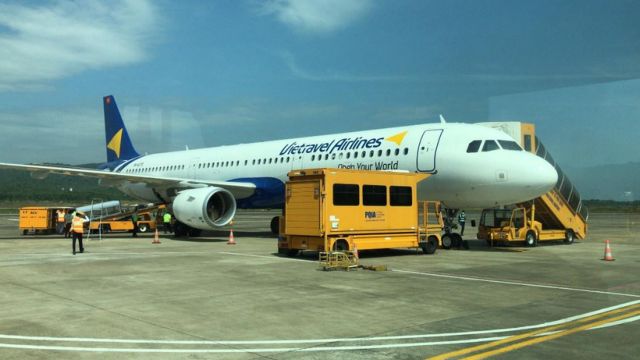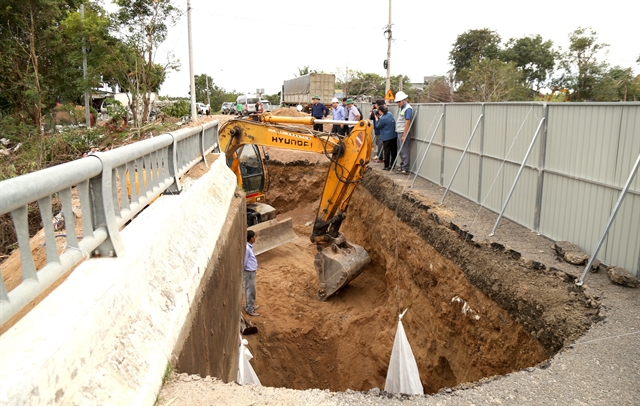 Society
Society

The saline intrusion in the Cửu Long (Mekong Delta) region during this year’s dry season would occur earlier and be worse than previous years, warned the Department of Water Resources Management under the Ministry of Natural Resources and Environment.

|
| Saline prevention sluice gate in Hoả Tiến Communes of Hậu Giang Province's Vị Thanh city. VNA/VNS Photo Duy Khương |
MEKONG DELTA – The saline intrusion in the Cửu Long (Mekong Delta) region during this year’s dry season would occur earlier and be worse than previous years, warned the Department of Water Resources Management under the Ministry of Natural Resources and Environment.
The level of saltwater intrusion may be approximately at the level of 2015-2016, which saw historic salinity and drought in the region.
This forecast was based on the data of water levels in the upper Mekong River’s reservoirs, the water resources of the Mekong River, especially the capacity of Cambodia’s Tonle Sap Lake, and the tides in the downstream area.
According to the data, the capacity of reservoirs in the upper Mekong River was estimated at 65 billion cu.m but by the end of September, the total capacity of reservoirs just reached nearly 70 per cent.
At Cambodia’s Kratie station, in the first half of the dry season which is from November 2021 to January 2022, the average flow will be only about 5,600 cu.m per second, 20 per cent lower than the same period in 2020-2021, but still higher than the years 2015-2016 and 2019-2020 by 26 per cent and 40 per cent, respectively.
In the second half of the dry season from February to May 2022, average flow at the station will be at 3,100cu.m per second, 10 per cent lower than the same period in 2021 and equivalent to 2016, but about 15 per cent higher than in 2020.
Regarding the water source in Tonle Sap Lake – a decisive factor in the regulation of water in the Mekong River Delta – the highest water volume forecast in 2021 is about 28-30 billion cu.m, which was 17-19 billion cu.m lower than the average capacity for many years and 1-2.5 billion cu.m of 2020.
In the dry season, tides from November to December this year will be higher than the average peak tide level for many years but from January to March 2022, the peak level will decrease gradually to the average levels of many years.
In 2022, there will be three high tides, from January 2 to 4, from January 31 to February 3, and from March 1 to 6, in which the first high tide is the largest in the dry season.
Meanwhile, the southwest monsoon that starts at the beginning of the dry season is a factor pushing saline intrusion deep into the canal system in the Cửu Long Delta provinces.
According to the Department of Water Resources Management, the saline intrusion in this dry season would affect 210,000ha of rice, orchards and rice-shrimp combination fields of the region.
Specifically, in the peak time, saltwater intrusion will likely affect 60,000ha of rice in the coastal provinces in the region, 11,900ha of which is in Tiền Giang Provice, 12,000ha of Bến Tre Province, 15,000ha of Trà Vinh and 20,000ha of Sóc Trăng.
For fruit growing areas, the saline intrusion will affect nearly 43,300 ha; in which, Long An is 3,100ha, Tiền Giang 21,800ha, Bến Tre 16,000ha and Sóc Trăng 3,400ha.
The saltwater will cause damage to 107,400ha of rice-shrimp combination fields in Kiên Giang, Cà Mau, Sóc Trăng and Bạc Liêu.
It was still quite early to accurately forecast saline intrusion in the dry season because the water source to the Cửu Long Delta depended greatly on the flow from upstream of the Mekong River including rain and water storage capacity of upstream reservoirs, the department said.
However, the possibility of small floods and low flows in the first months of the dry season may cause early saltwater intrusion, so the department recommends localities which are likely to be affected by saline intrusion must prepare irrigation solutions and production plans to minimise damage to agricultural production.
For the fruit growing areas, the farmers should store fresh water at maximum capacity in canals and ponds.
Provinces of Long An, Bến Tre, Tiền Giang, Trà Vinh, Sóc Trăng, Bạc Liêu and Kiên Giang were recommended to complete the sowing of 400,000ha of winter-spring rice crop by October to avoid drought and salinity.
At the same time, the provinces must dredge the canal system to store fresh water and gradually close the sluices from the sea to the upstream from November.
Bến Tre Province particularly may face difficulties in fresh water sources in this dry season because of incomplete water source control infrastructure so it should dig more ponds and lakes to store water.
The localities that are not directly affected by saline intrusion, should still prepare preventive measures for drought and water shortage due to insufficient rainfall and low water resources from upstream, the department said. VNS




